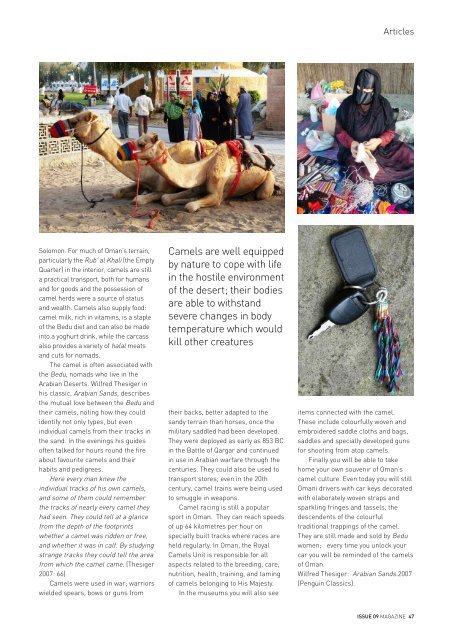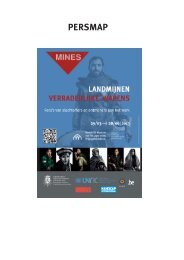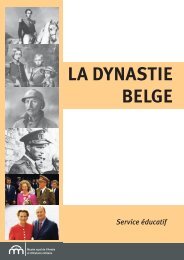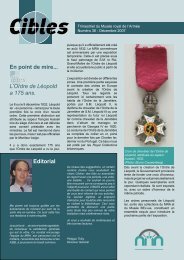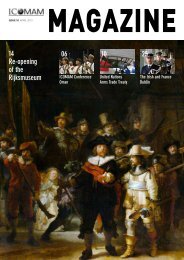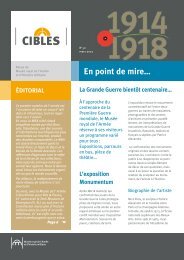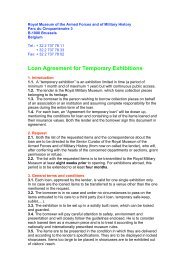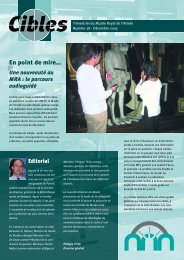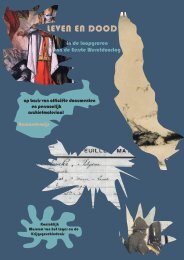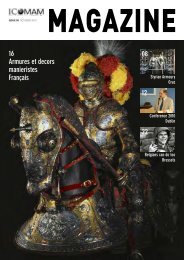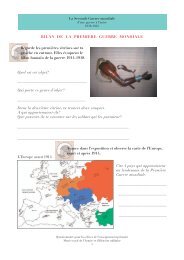Download issue 09 (High resolution) Februari 2012 (PDF 5,26 MB)
Download issue 09 (High resolution) Februari 2012 (PDF 5,26 MB)
Download issue 09 (High resolution) Februari 2012 (PDF 5,26 MB)
- No tags were found...
Create successful ePaper yourself
Turn your PDF publications into a flip-book with our unique Google optimized e-Paper software.
ArticlesSolomon. For much of Oman’s terrain,particularly the Rub' al Khali (the EmptyQuarter) in the interior, camels are stilla practical transport, both for humansand for goods and the possession ofcamel herds were a source of statusand wealth. Camels also supply food:camel milk, rich in vitamins, is a stapleof the Bedu diet and can also be madeinto a yoghurt drink, while the carcassalso provides a variety of halal meatsand cuts for nomads.The camel is often associated withthe Bedu, nomads who live in theArabian Deserts. Wilfred Thesiger inhis classic, Arabian Sands, describesthe mutual love between the Bedu andtheir camels, noting how they couldidentify not only types, but evenindividual camels from their tracks inthe sand. In the evenings his guidesoften talked for hours round the fireabout favourite camels and theirhabits and pedigrees.Here every man knew theindividual tracks of his own camels,and some of them could rememberthe tracks of nearly every camel theyhad seen. They could tell at a glancefrom the depth of the footprintswhether a camel was ridden or free,and whether it was in calf. By studyingstrange tracks they could tell the areafrom which the camel came. (Thesiger2007: 66)Camels were used in war; warriorswielded spears, bows or guns fromCamels are well equippedby nature to cope with lifein the hostile environmentof the desert; their bodiesare able to withstandsevere changes in bodytemperature which wouldkill other creaturestheir backs, better adapted to thesandy terrain than horses, once themilitary saddled had been developed.They were deployed as early as 853 BCin the Battle of Qargar and continuedin use in Arabian warfare through thecenturies. They could also be used totransport stores; even in the 20thcentury, camel trains were being usedto smuggle in weapons.Camel racing is still a popularsport in Oman. They can reach speedsof up 64 kilometres per hour onspecially built tracks where races areheld regularly. In Oman, the RoyalCamels Unit is responsible for allaspects related to the breeding, care,nutrition, health, training, and tamingof camels belonging to His Majesty.In the museums you will also seeitems connected with the camel.These include colourfully woven andembroidered saddle cloths and bags,saddles and specially developed gunsfor shooting from atop camels.Finally you will be able to takehome your own souvenir of Oman’scamel culture. Even today you will stillOmani drivers with car keys decoratedwith elaborately woven straps andsparkling fringes and tassels, thedescendents of the colourfultraditional trappings of the camel.They are still made and sold by Beduwomen; every time you unlock yourcar you will be reminded of the camelsof Oman.Wilfred Thesiger: Arabian Sands.2007(Penguin Classics).ISSUE <strong>09</strong> MAGAZINE 47


